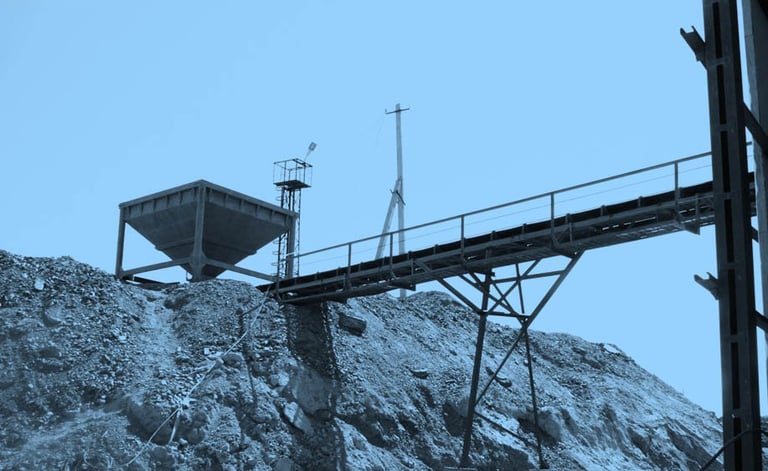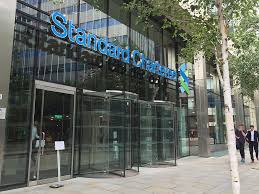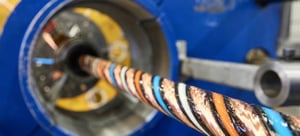Ferro-Alloy Resources Ltd (LON:FAR) Chief Executive Officer Nick Bridgen caught up with DirectorsTalk for an exclusive interview to discuss their interim results, longer term production plans and the reason for the loss in the reporting period.
Q1: Now, interim results for the six months ended June 30th just out, production figures were looking very good and you said in your announcement that there’s been a step change since the accounting date? Nick, can you explain what that’s all about?
A1: Ferro-Alloy Resources has been announcing, really as we’ve gone along, quite a lot of the things we’ve been doing to the plant and really since June 30th, which is our accounting date, everything has really come together from what we’ve already done.
So, we’ve actually doubled production from the previous comparable period and in the first two months since then, we produced 70 tonne so that’s an average of 35 tonnes a month compared with just over 16 per month at the beginning of last year so that was really good.
That really just reflects everything that we’ve done coming on song together, we’ve got two ovens working treating the hydrate concentrates and the metallurgical line was contributing a little as well so that’s all good.
We’ve got more to come really as the power contract gets completed, the connection to the adjacent high voltage lines so we’re still suffering from that and that’s containing production, but that is on the way to being fixed.
Q2: Nick, what can you tell us about your longer term production plans?
A2: Really it all starts to happen end of this year and over the course of next year, at the end of this year, we’ll have our converter oven in operation, that takes the AMV – ammonium metavanadate – that we currently produce and converts it into v2O5 which is a more marketable form of vanadium. So, it’ll open up many more customers, more complete competition so we’ll get higher prices and also there’s a discount for selling AMV, which will eliminate so that’s a sort of 11%-15% discount. So, we’ll have a sort of step up in price per pound that we produce and the access to a much wider market.
Next year, around the end of the first quarter, the power will be connected to this high voltage line, as I’ve talked about, now that immediately means that we don’t suffer the interruptions we currently do and should make our existing capacity much more reliable. I’ve said in the past, in various releases, that we’ve got sort of current capacity to produce about 60 or 70 tonnes so in other words, double what we’ve what we’ve produced on a monthly basis in the two months that I’ve just talked about so doubling again.
Around the middle of the year, we want to get our electric arc furnace into operation, that really completes the original plan that we listed with back at the beginning of last year. We said we had a target production then of 1500 times a year, that’s 125 tonnes a month so pretty much double again. So, two doublings to happen by the middle of next year is the plan, it does depend on finance but it’s all part of the plan, all part of the original concept, and we’re a long way towards it.
Even further ahead, I should mention that this is a small plant, this is just our original pilot plant that we’re expanding out. Of course, our main business, the reason we exist is to develop the project and that will take production up to phase I, will get us to close on 600 tonnes a month and then phase II will get us up to almost 2000 tonnes a month.
So, there are a huge increases in production once the project comes on stream but even from this little plant, production will be a healthy number and it should be a very nice operation.
Q3: Now, Ferro-Alloy Resources made a loss in the reporting period of $1.6 million, can you explain the background to this for us please?
A3: That’s no surprise, all vanadium companies were making losses and really for much the same reason, the price of vanadium dropped during the course of 2019 and early 2020. Now, that has a sort of magnified effect because you have to appreciate that we’re buying our raw materials several months before we do the actual producing because they take time to ship and we have to have some stores onsite. Once we process them, we then deliver them and it takes two or three months to deliver them to customers.
Most of spot vanadium contracts are based on pricing at the time of delivery, or around the time of delivery, depending on the exact contract so we’re buying our raw materials, which are based on the vanadium price up to six/seven months before we actually sell them. So, in a period of falling prices, we’re paying for our raw materials, a percentage of the vanadium price, based on a much much higher vanadium price than on the basis on which we sell our production. So, it’s a highly magnified effect of falling prices,
What’s different in going forward is first of all, we haven’t got that magnifying effect, the price is still hadn’t recovered, we’ve still got very low prices but they’re not falling so we’re paying a raw material cost on the same basis as we’re selling the product. So, there’s no magnifier effect on that so that’s eliminated then.
The production has gone up significantly, as I said, it’s already doubled and there’s two more doublings to go, based on this small plant so if you imagine that all of our costs are pretty much fixed, except for the raw material costs, but all our overheads and salaries and power and everything are pretty much fixed and so we just get a hugely better financial performance.
So, I don’t think anyone should be surprised that we made losses in the first half of this year and really, it was expected and it’s no indicator of what we’re going to be doing going forward.










































